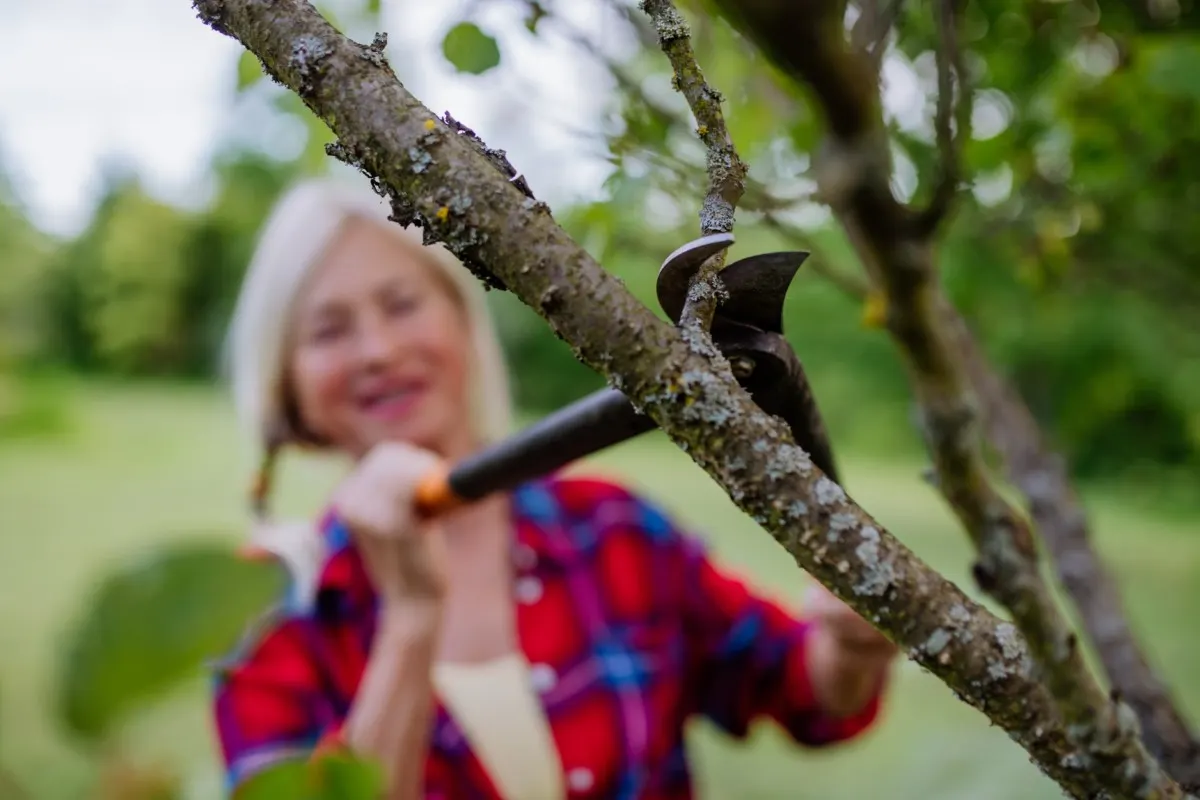
Fruit-bearing trees that are left to grow just as nature intended will become massive over time. Although beautiful, mature fruit trees with large spreading canopies and dense crowns will shade out the sun from the lower limbs.
While unpruned fruit trees certainly have ornamental value, it comes at the cost of fruit production.
When you’re keen to grow trees primarily for fruit, you must familiarize yourself with summer pruning. This will alter the shape and structure of the tree, of course. But when done correctly, pruning results in healthier trees that will become consistent and generous providers.
Why Prune Fruit Trees in Summer?
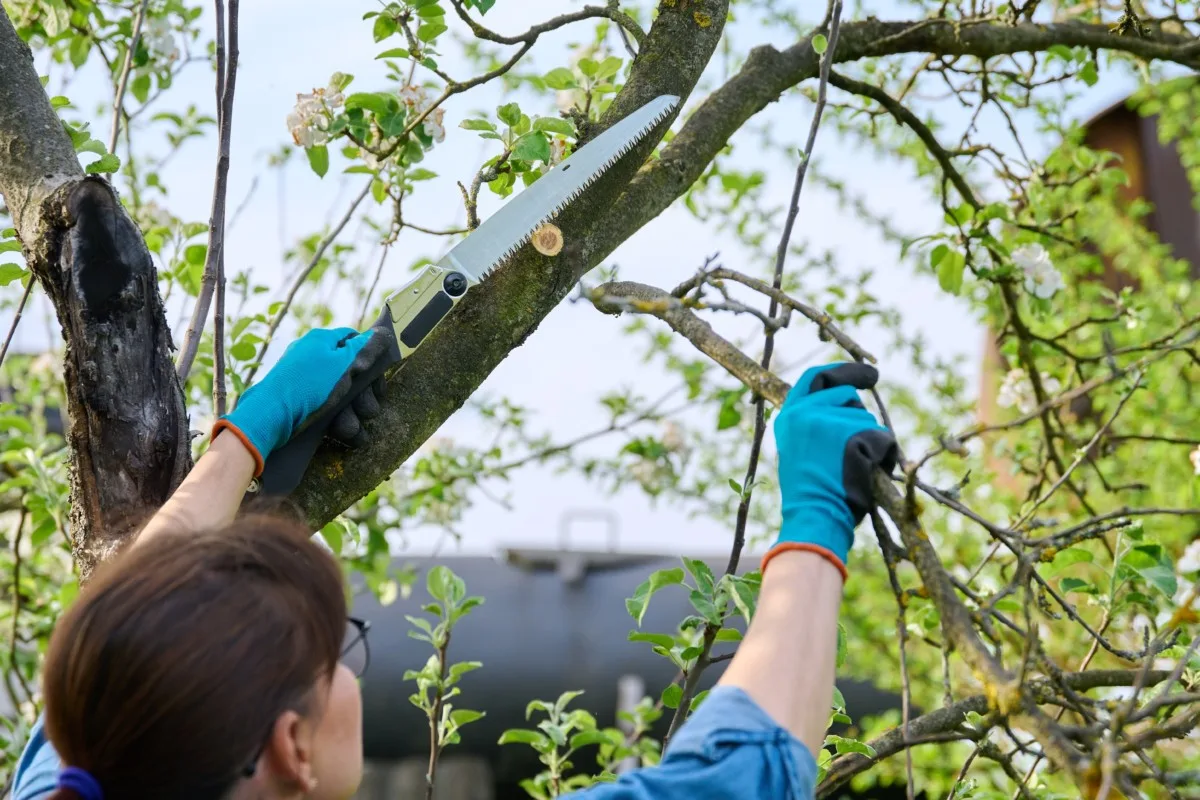
Most pruning is done when the trees are dormant in winter, after the leaves have dropped but before the buds begin to form in early spring. Winter pruning has an invigorating effect on the tree, and wherever cuts were made, new vegetative growth will explode once the growing season arrives.
But by mid-summer, we want the trees to stop producing leafy growth and switch their energies towards fruit set. This can be accomplished with a series of strategic cuts that will promote fruit bud development on lateral branches, without inadvertently causing more fruitless branching.
Reduce height and control regrowth
Unpruned fruit trees can get quite enormous – peach can reach 20 feet tall and wide, apple 30 feet, and pear more than 50 feet. Because the upper portion of the tree canopy will receive the most sunlight, it will produce the most fruit – but you’d practically need a scissor lift or cherry picker to reach it.
Summer pruning keeps the size of fruit trees manageable and their fruits more accessible come harvest time.
Wherever you cut in summer will regrow in inches; the same cutting done in winter would regrow in feet.
Pruning at this time of year has the greatest dwarfing effect on the tree. The removal of live, leaf-bearing branches slows the tree’s growth, dwarfing the root system initially and then the total size of the tree.
Let in more light into the interior
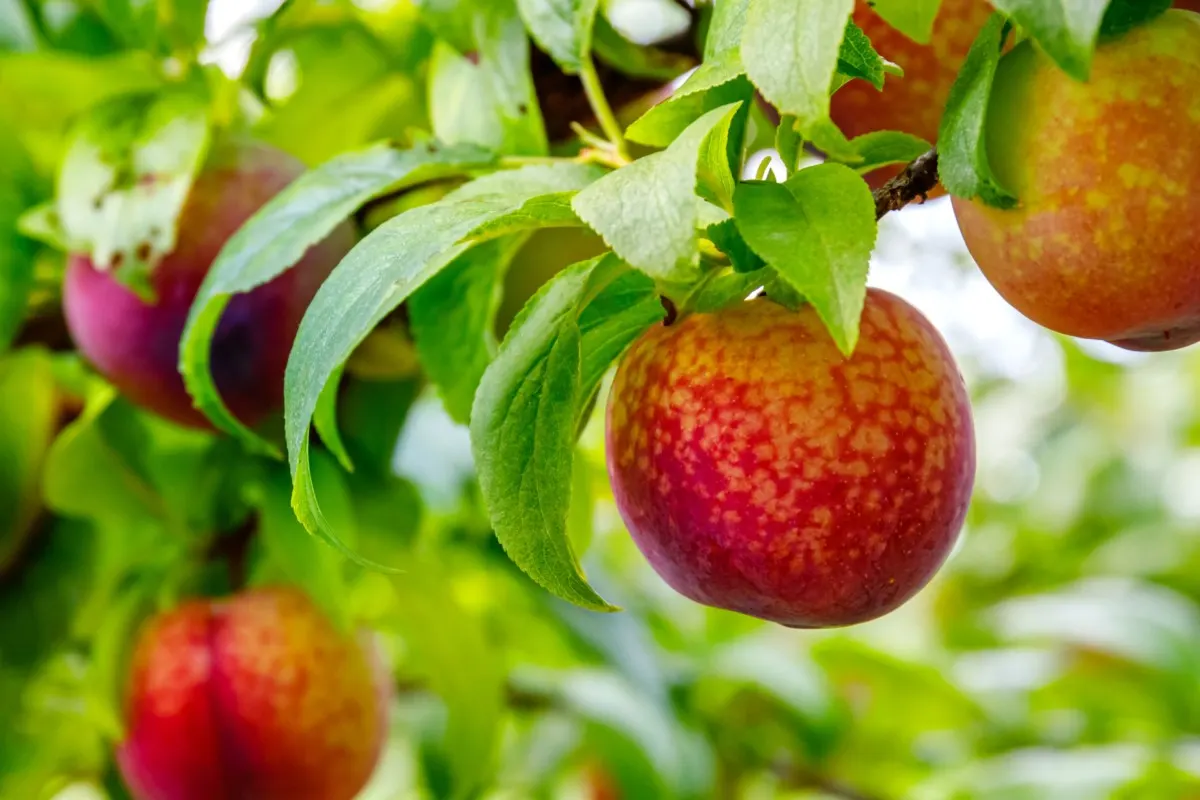
For a fruiting branch to develop and maintain fruit, it will need to receive 50% or more of direct sunlight each day.
In unpruned fruit trees, sunlight will only penetrate about 3 to 4 feet into the top of the tree’s canopy. Branches that are crowded around the central trunk shade out the light, producing fruit at the top of the canopy and very few – if any – towards the bottom.
But pruning in summer removes and thins out the shading boughs, creating tunnels of light that can reach the lower portions of the tree.
Letting more light into the canopy interior will increase the number of fruiting branches and ensure fruits are more evenly distributed through the tree.
Sweeter, more flavorful fruit
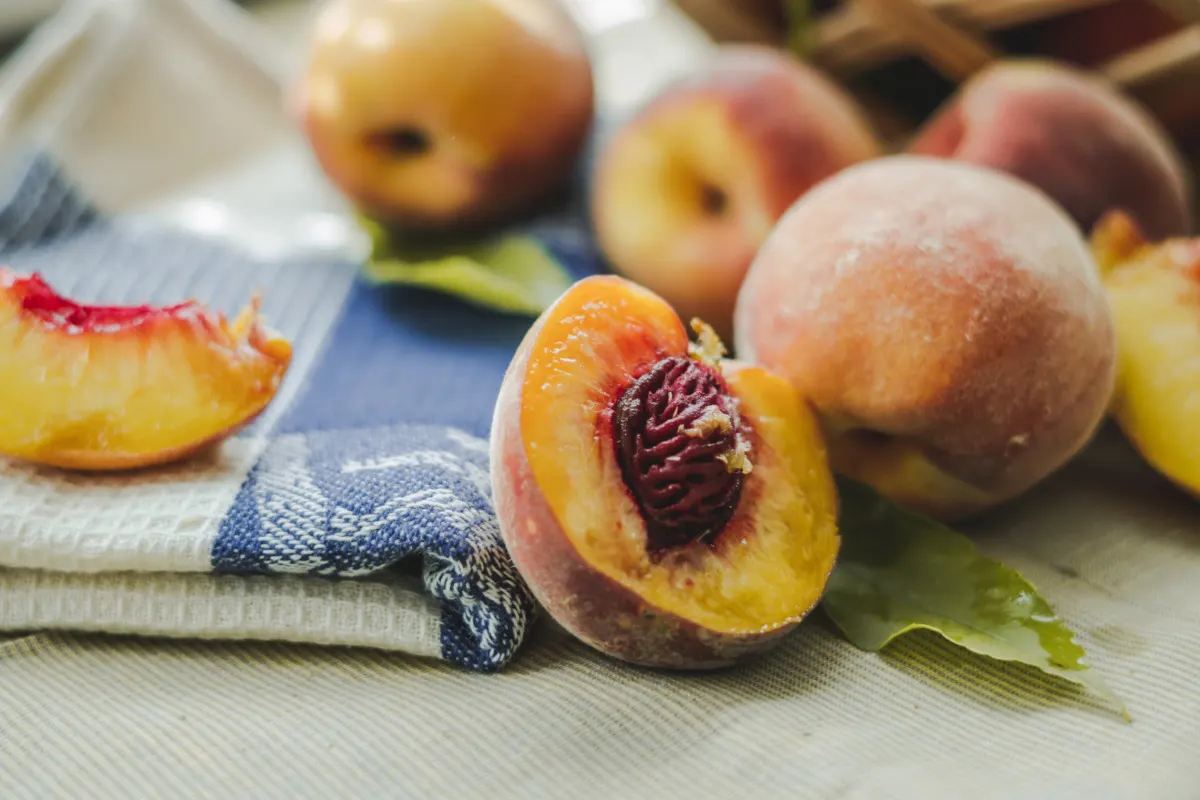
During the active growth of summer, tree leaves undergo photosynthesis and produce energy in the form of carbohydrates. These carbohydrates are directed throughout the tree to grow roots, shoots, leaves, and fruit.
When live limbs are cut back over summer, it causes the tree to react by reducing its overall growth. Its energy reserves will pivot away from vegetative growth and instead go toward fruiting.
With less leafy growth to siphon up the tree’s resources, the fruits will become the main beneficiary of its carbohydrate reserves. More sugars will be available for the fruits as they grow, making them sweeter and much more flavorful.
Prompts better fruit bud formation
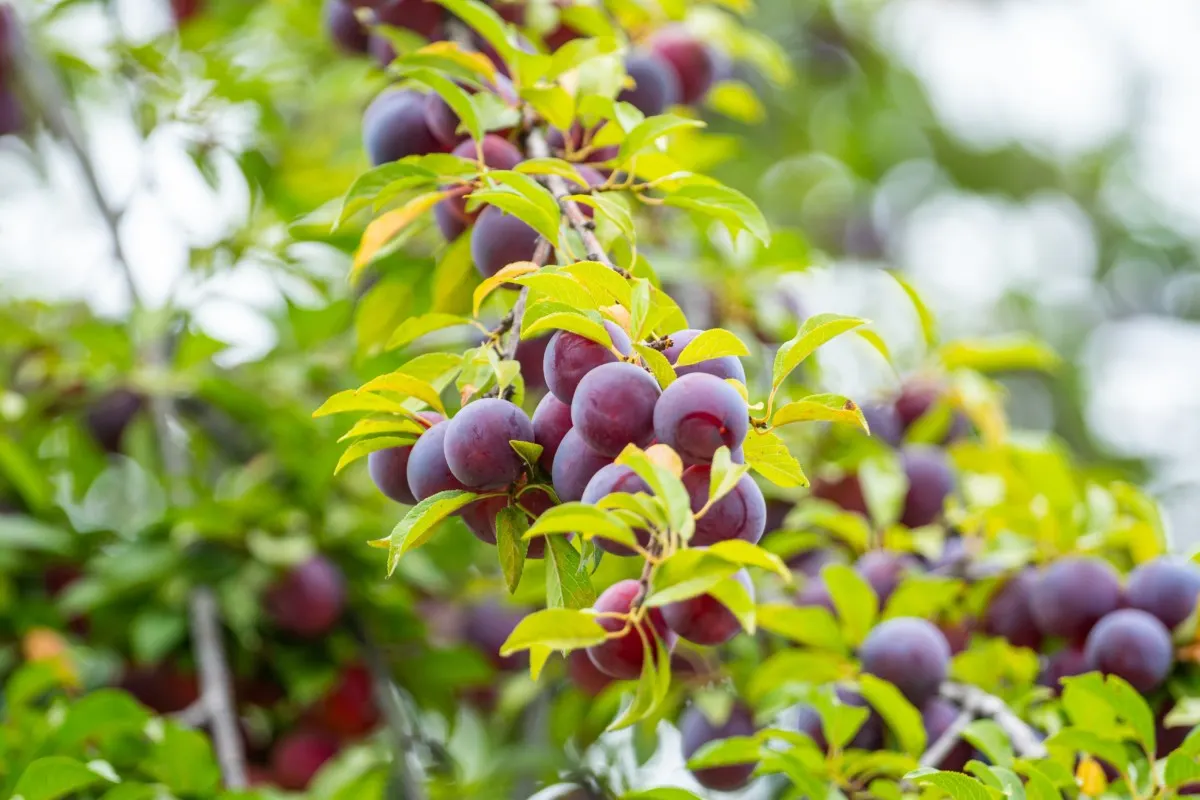
Whether or not a bud becomes a leaf or a flower largely depends on the tree’s supply of growth hormones. Things like auxins and gibberellins will promote leafing branches, while ethylene tends to trigger flowering buds – especially in apples and other pome fruits.
Ethylene is a gaseous substance that is released at the growing tips of roots, from flowers and ripening fruit, as well as damaged plant tissues.
And so, pruning and trimming back lateral branches in summer rapidly releases ethylene from every spot that was cut. As the ethylene gas is released, it rises and saturates the tree canopy.
Although the exact mechanisms behind it are still unknown, it’s thought that flooding the tree with ethylene in this manner causes more flower buds to develop throughout the crown.
Grow a stronger tree
Every time you “head back” a branch – that is, shorten its length without removing the limb entirely – it will grow back stronger.
As the lopped off ends of fruit-bearing boughs start to regrow, the branch will thicken in the process.
Tree branches that have been trimmed in summer are better able to bear the weight of the fruit, making the limb far less likely to sag down to the ground or snap off the tree entirely.
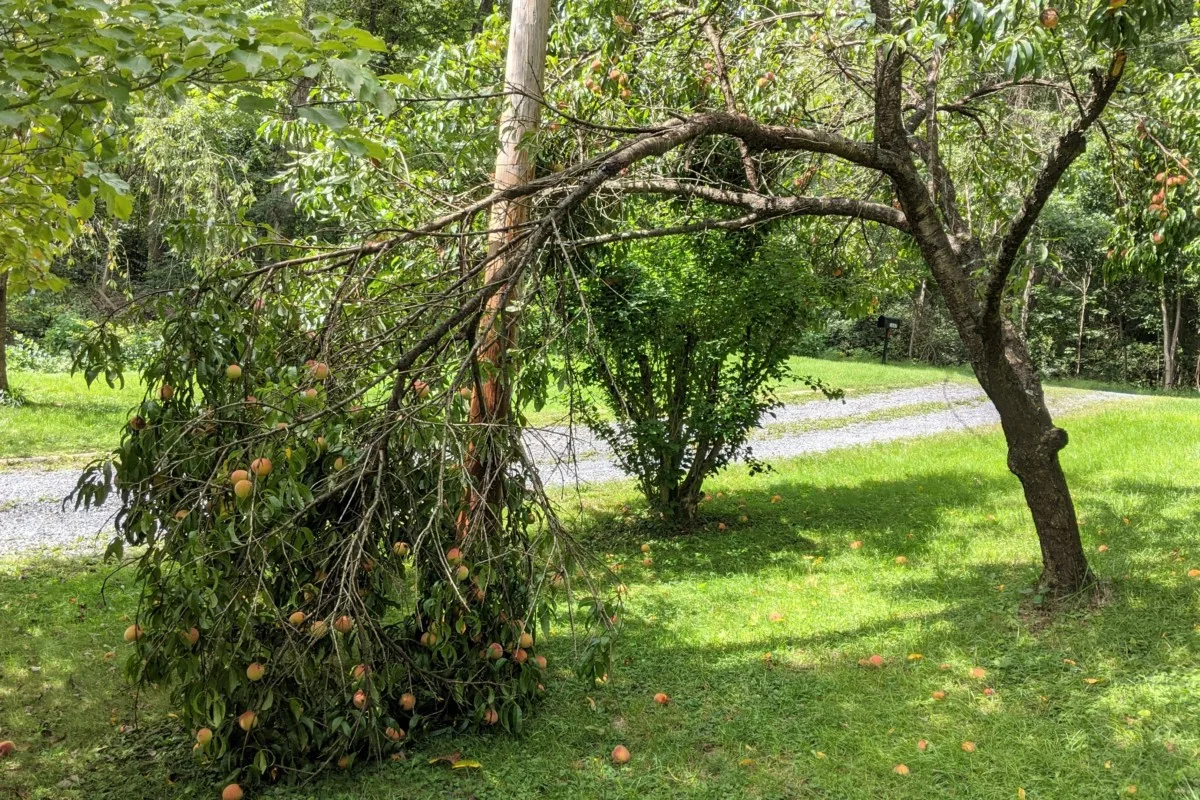
8 Tips for Pruning Fruit Trees in Summer
1. Get the Timing Down
Summer pruning is best accomplished in mid to late summer. This can be anywhere from July to September, depending on where you live.
You’ll know it’s time to summer prune when the majority of branch tips have set a terminal bud.
Throughout spring and early summer, when your fruit trees are actively growing, they will have a bud at the tip of each branch that lengthens the limb and produces leaves. When the tree has moved past the active growth phase, it will develop a fat and swollen bud – oftentimes, a fruit bud – and the branch will grow no more that year.
The terminal bud is the best signal that this is the perfect time to prune. The tree has already allocated its energy for the season and any cuts you make now will not burst forth with excessive regrowth.
2. Use the Right Tools for the Job
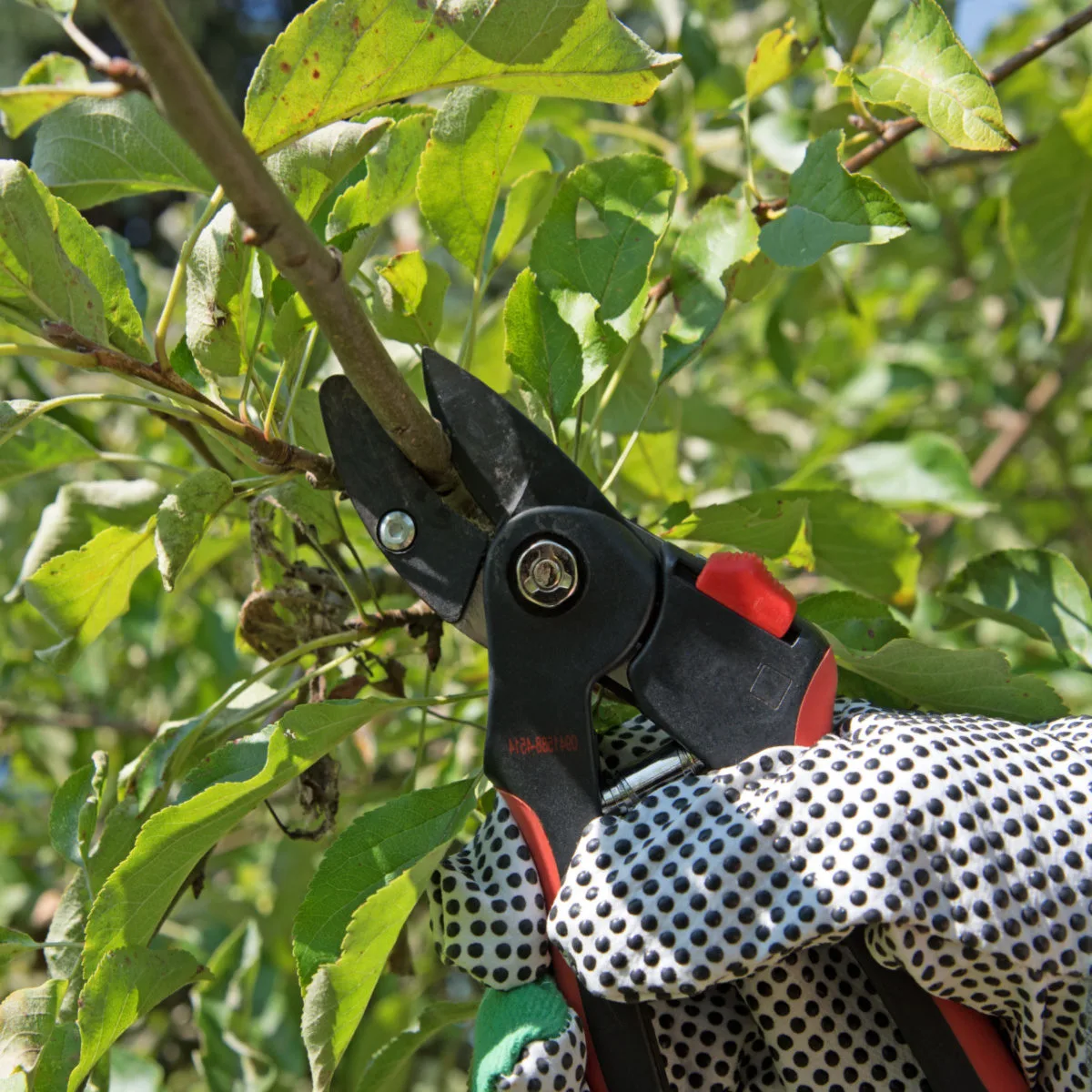
Using the proper pruning tools will make the job easier. Always make sure your pruners are clean and sharp before getting to task.
Bypass loppers are excellent for snipping away live limbs that are 1.5 inches in diameter or less. The scissor-like blades can get in close to where the shoot meets the branch, making clean cuts in tight spaces.
For shoots and branches less than an inch in diameter, use a pair of bypass hand pruners.
If you’re renovating a mature – but neglected and overgrown – fruit tree, it’s best to hire a professional service before attempting to prune it yourself. Once it’s a more manageable size, you can take over the seasonal pruning and maintenance.
3. Make Clean Cuts
Any cuts you make should be clean, straight, and smooth, with no ragged or torn edges.
Frayed stubs and branch ends will slow down the tree’s natural healing process. Poorly pruned spots are also more susceptible to disease and can create new entry points for insects.
When removing shoots and branches, make sure the cuts are flush to the primary branch. Wood heals most quickly in summer when the bark ridges around the base of removed branches are left intact.
Peach trees are an exception – make collar cuts instead of flush cuts, leaving a short nub back on the tree.
When pruning cuts are clean and flush, there’s no need to dress or seal the wounds.
4. Remove All Dead Branches, Suckers, and Watersprouts
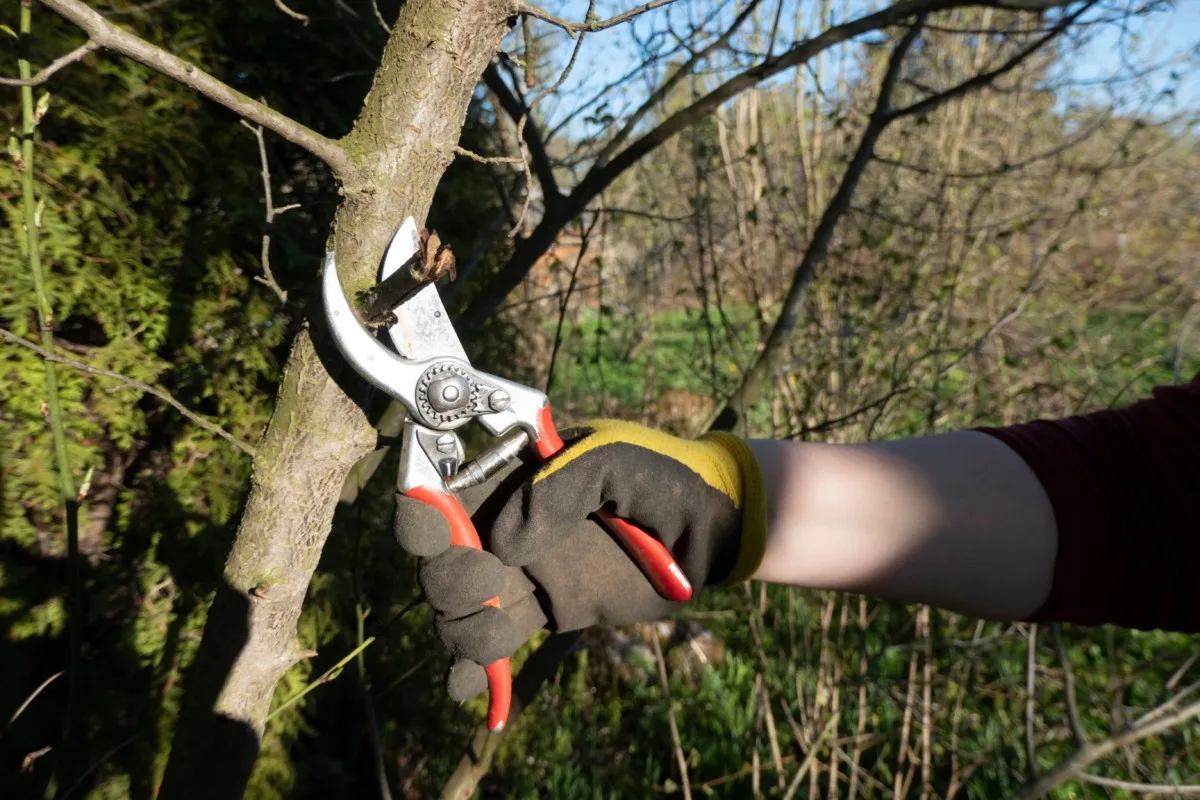
Begin summer pruning by cutting out all dead, diseased, and broken branches. Once these are removed, it’ll be so much easier to see the form and structure of your tree.
Also prune out suckers growing at the base of the trunk. Watersprouts – thin and twiggy vertical growth that emerge from the trunk or larger limbs – should also be snipped away.
Suckers and watersprouts are purely vegetative and take up precious resources and space that would be better reserved for fruit-bearing limbs.
5. Thin Out Lateral Branches
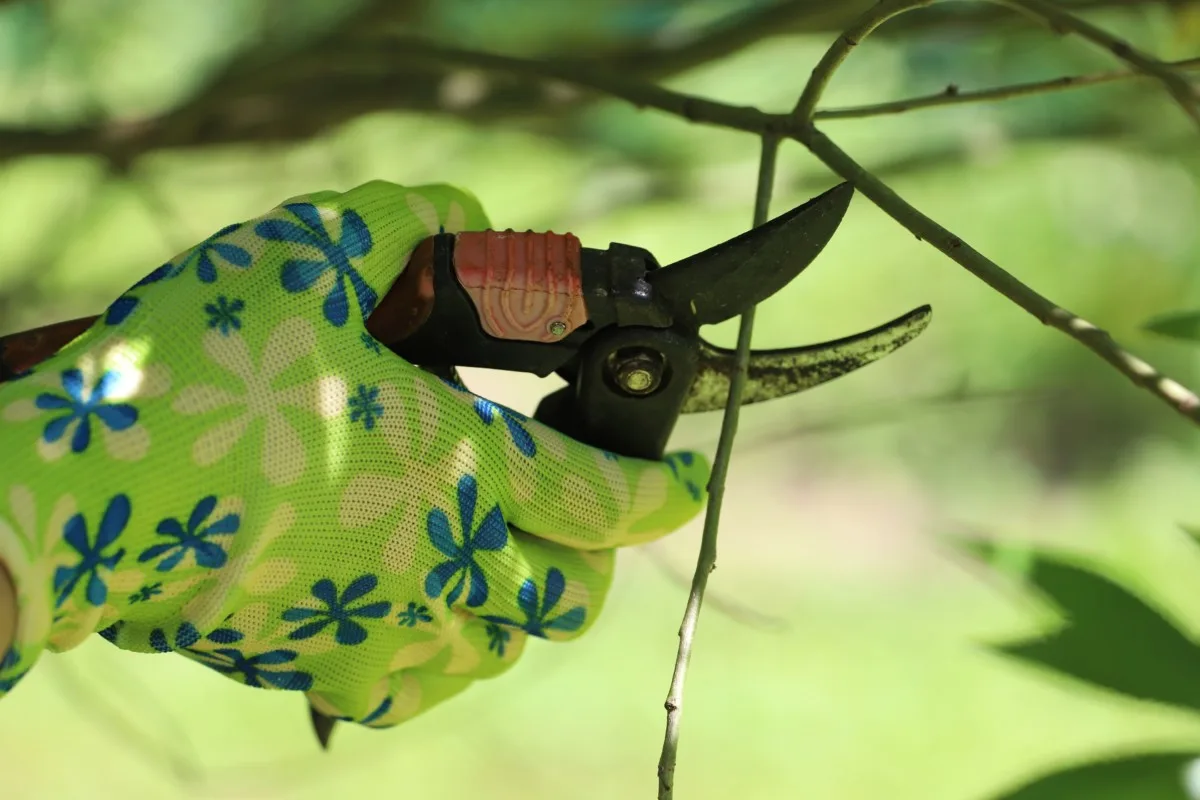
Every tree is going to be a little different in shape and structure. You may have a fruit tree with a central trunk and several large branches growing from it (known as a “single leader” tree). Or it may have two or more dominant stems with numerous limbs arrayed around them (called a “multiple leader” tree).
Regardless of its shape, the tree’s general anatomy will be the same. From these larger limbs – known as scaffolding branches – lateral branches will grow. Lateral branches are the shoots that will eventually flower and bear fruit.
After lateral shoots emerge, they will form fruit buds in their second and third year. In the third and fourth year, the lateral will finally give a harvest of fruit. Once a mature lateral branch is brought to bear, it becomes a perennial organ that will provide for many years.
The goal of summer pruning is to space the lateral branches roughly 7 to 9 inches apart along the scaffolding branch.
This is accomplished by thinning – or removing the entire shoot from its point of origin.
When selecting which laterals to keep or thin out, leave the shoots that are growing horizontally (at a 0 to 45 degree angle) and are short (about 8 to 9 inches long) to develop on the tree.
Remove laterals that are lengthy and vigorous, as these branches often grow too long and will shade out neighboring limbs.
Once laterals are properly spaced out, train them to grow along the horizontal plane and perpendicularly to the primary branch. Use V-notched tree spacers or twine to help orient the lateral shoots, adjusting them periodically as they grow.
6. Use the 3 Bud System
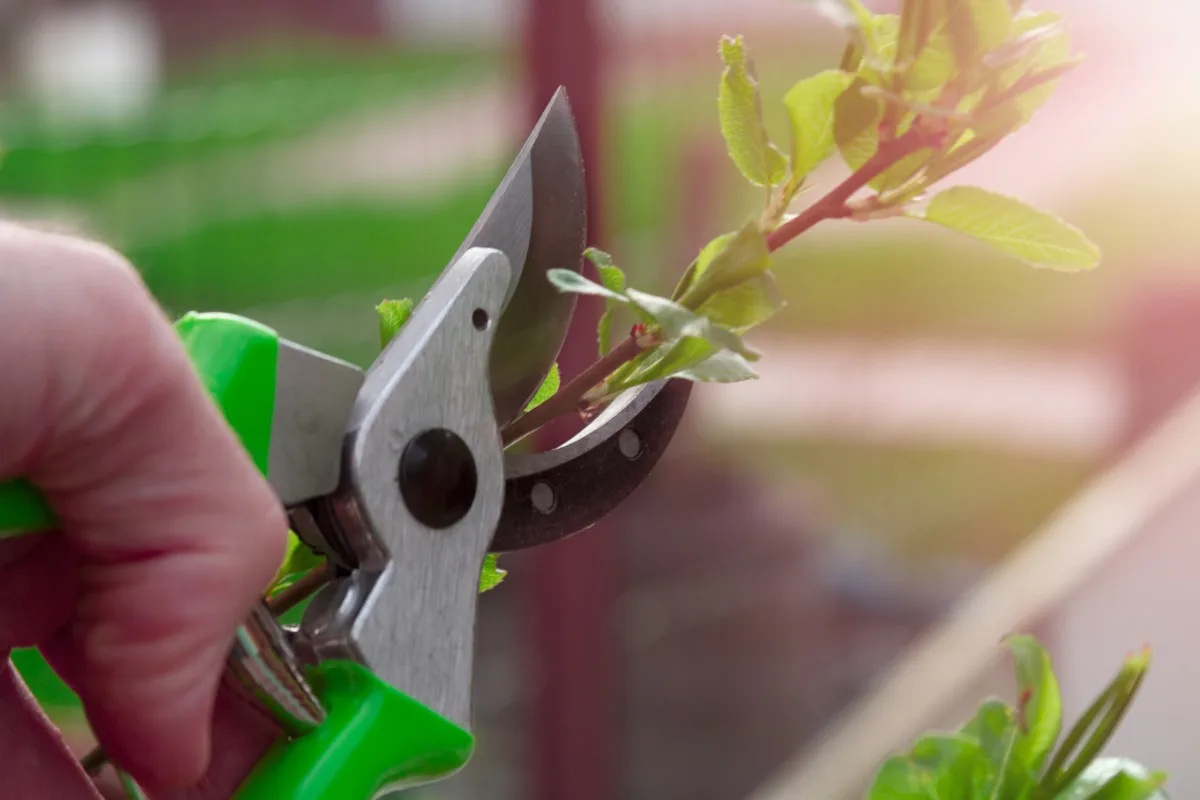
The next step in summer pruning is to use heading cuts to remove length from the laterals you’ve decided to keep.
Any lateral shoots that are 8 to 9 inches long are perfect as they are and don’t require pruning. For the others, snipping off the growing tips will make for stronger and thicker branches that can support the weight of fruit without breaking.
To determine where to cut along the lateral shoot, let the 3 bud system guide you.
Based on the findings of French orchardist Louis Lorette, the 3 bud system involves cutting back the laterals to 3 buds of new growth. The bud at the end will continue to regrow by a few inches, while the other two buds will become long-lived spurs that will yield fruit for many years.
With the 3 bud system it’s even possible to get your hands on fruit more quickly. Heading back laterals will sometimes produce fully formed fruit the following season, as opposed to its third or fourth year of growth.
7. Train Fruit Trees When They’re Young
Hold off on summer pruning until your fruit trees are at least 5 years old and have begun to produce fruit in earnest.
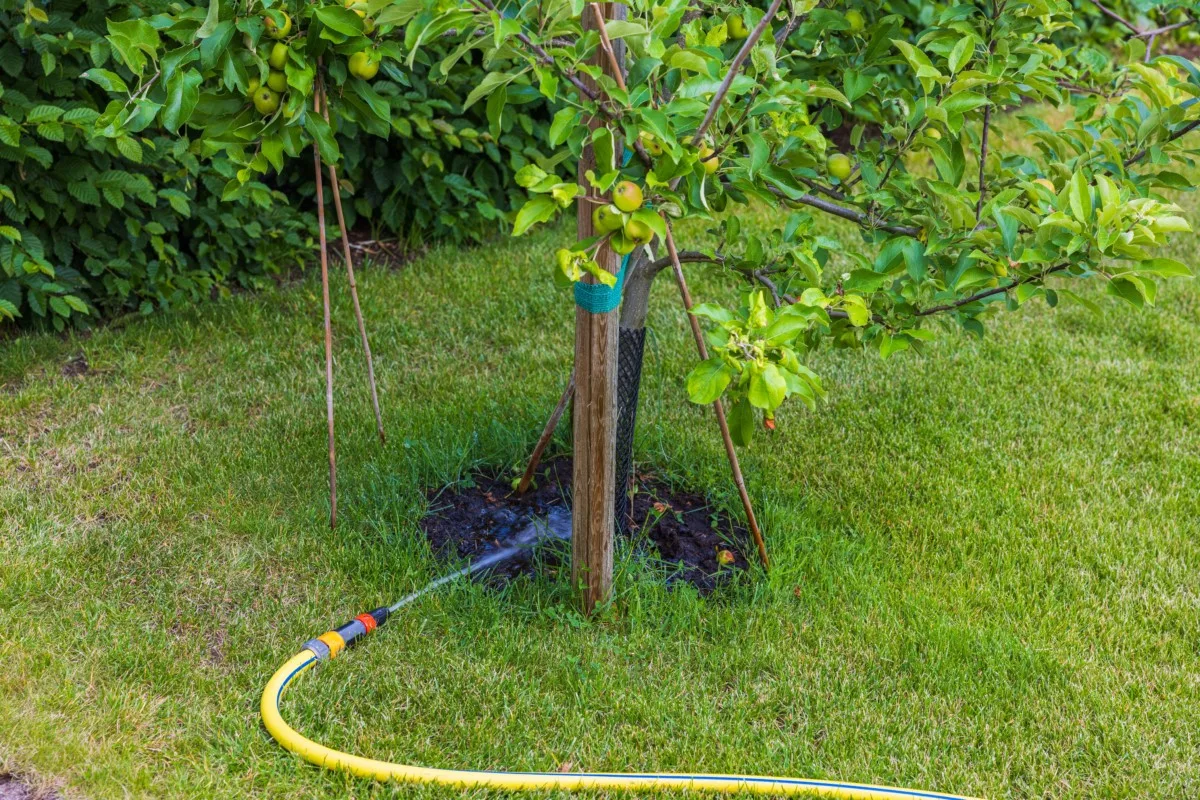
Younger fruit trees should be allowed to grow vegetatively so as to lay a solid foundation for its later fruit-bearing years. Having about 6 to 8 scaffolding branches along the trunk will build a good starting framework.
As youthful trees become established, they may start producing small crops of fruit too soon. As tempting as it might be to let the fruits develop, allowing the tree to fruit prematurely will slow its ability to branch out and create that sturdy structure.
The twiggy branches are also too young and thin to hold heavy fruits, increasing the likelihood they will bend and break. It’s best to remove early fruits by thinning the shoots down to the primary limb.
Shaping and training trees in their early years will maximize fruit production later on and make maintenance pruning all the easier.
In years 3 and 4, you can start lightly thinning out branches and using spacers or stretchers to train them to shape.
Open center training is where the scaffold limbs are arranged around the trunk at about the same height, like spokes on a wheel. Peaches, nectarines, and other stone fruits prefer to grow in an open center shape.
Modified central leader training is where scaffold limbs are staggered up the trunk, each facing a different direction like a Christmas tree. Sour cherries, apples, apricots, pears, plums, pecans, figs, walnuts, pomegranate, and persimmons will be most productive in this form.
Sweet cherries have no preference and will grow in abundance with either shape.
8. Don’t Forget to Thin the Fruit
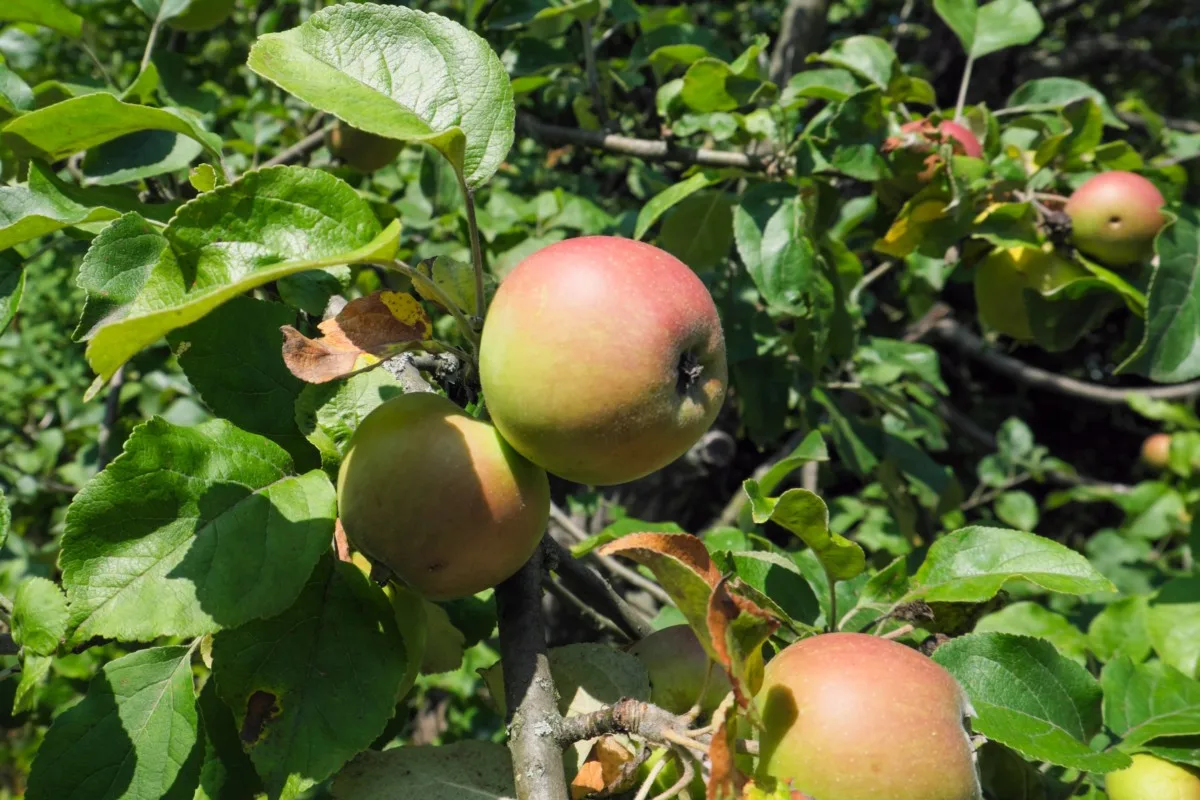
Summer pruning is all about setting up your fruit tree for success in the following seasons. Thinning, heading back, and training lateral branches today will pay in bushels tomorrow.
But for the crop coming in here and now, thinning out the fruit will have tangible benefits for this year’s harvest.
Fruit thinning is done earlier in the season, after fruits have set and are about a half-inch in diameter. Pluck out fruits by hand, leaving one fruit (or cluster of fruit) every 4 to 6 inches down the branch.
The fruits left back on the tree can now grow unhindered, receiving more of the tree’s energy and sugars. That means large, impossibly sweet fruit at gathering time.
Removing fruit lightens the weight on each branch, resolving potential load-bearing problems too.
It also encourages flower bud development the following year. Thin out your fruit each season and you’ll have consistently bountiful harvests every single autumn.

Get the famous Rural Sprout newsletter delivered to your inbox.
Including Sunday ramblings from our editor, Tracey, as well as “What’s Up Wednesday” our roundup of what’s in season and new article updates and alerts.

